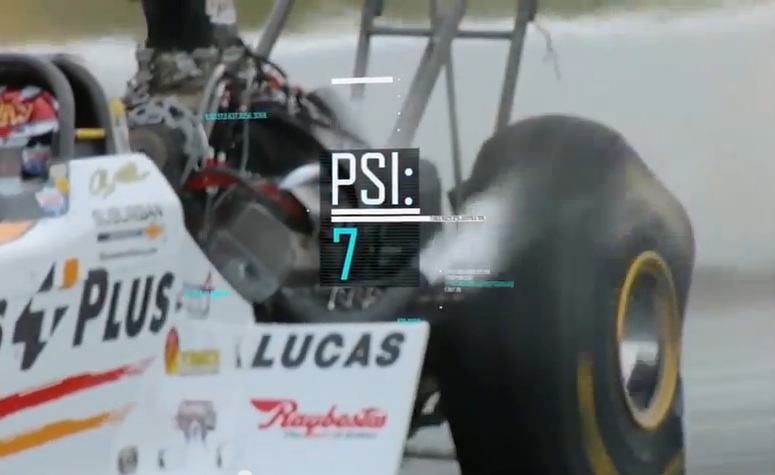There are two things that struck me about this cool ESPN Sports Science profile of a top fuel dragster. The first is that they attack the topic with a different angle than most of the other “fact” style videos we have ever seen of a top fueler and the second is that it made me honestly miss being at the digs with these big monsters like I was all summer. There’s just something about that scream and roar that makes the hair on the back of my neck stand up. Anyway, my personal psychosis aside this is a great watch because while it talks about some of the stuff you know, it hits on some interesting numbers regarding the tires, regarding the forces placed on the driver during a run, and on the overall bad assery of these, the fastest accelerating piston driven objects in the world.
The ESPN Sports Science guys are usually breaking down stuff like amazing football catches, how much force a championship tennis player swings with, or the difficulty of hitting a 90mph fastball so I was a little leery about this foray into drag racing but they really nailed it. Compact, fun, and full of good information this could be the ticket to get your (smell free, unfortunately) nitro fix this weekend. The first NHRA race I’ll be hitting in 2015 is Phoenix, but we’ll hopefully be sampling some nitro goodness next month at Palm Beach International Raceway, so let this tide you over for a while!













“Plugs fire 150 times a second.” he says. That’s 18,000 rpm. I don’t believe it. Maybe he thinks it’s a 2-stroke.
He said piston, not plug, but you’ve got a point.
most of them top out at 10,000 rpm
they have a rev limiter set at 7800 rpm
Not unless they are running F1 engines, they used to turn over 21k.
dude, they are running 16 plugs not 8
Cool clip, there’s some interesting nuggets in there.
16 sparkplugs that’s 150 at 9000
Especially interesting to me is of the twenty or so teams competing at an event after millions and millions of variables are considered the cars generally run within a few ten thousandths of a second of each other.